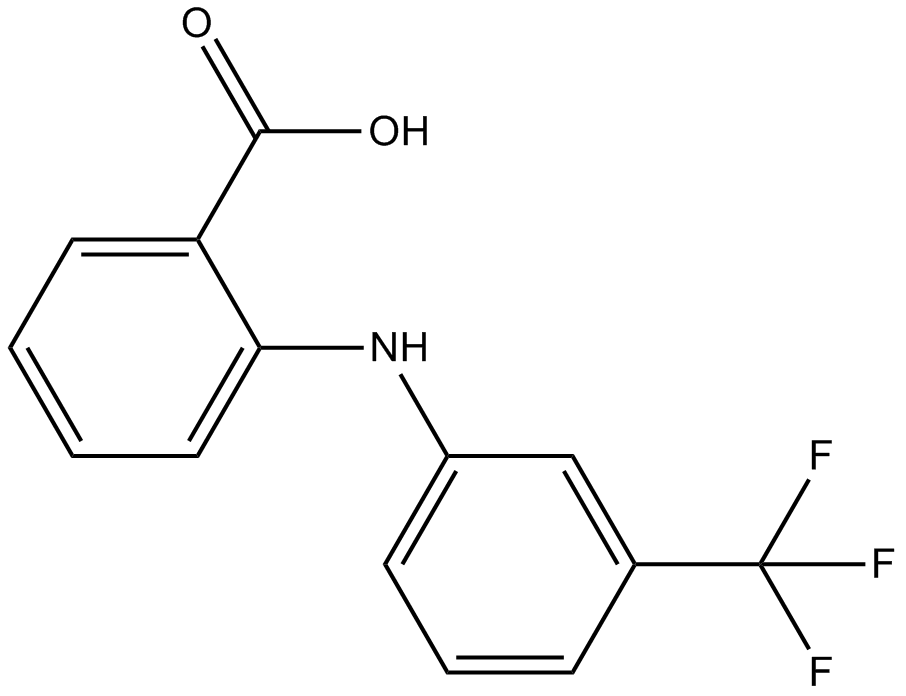Flufenamic acid (Synonyms: CI-440, FFA, Fluphenamic Acid, NSC 82699, NSC 219007) |
| Catalog No.GC13466 |
TRPC activator
Products are for research use only. Not for human use. We do not sell to patients.

Cas No.: 530-78-9
Sample solution is provided at 25 µL, 10mM.
Flufenamic acid is a non-steroidal anti-inflammatory agent, inhibits cyclooxygenase (COX), activates AMPK, and also modulates ion channels, blocking chloride channels and L-type Ca2+ channels, modulating non-selective cation channels (NSC), activating K+ channels.
Flufenamic acid is a non-steroidal anti-inflammatory agent, inhibits cyclooxygenase (COX), and also modulates ion channels, blocking chloride channels and L-type Ca2+ channels, modulating non-selective cation channels (NSC), activating K+ channels. Flufenamic acid inhibits a wide spectrum of TRP channels, including: C3, C7, M2, M3, M4, M5, M7, M8, V1, V3, and V4 but activates at least two TRP channels (C6 and A1)[1]. Flufenamic acid induces AMPK activation in T84 cells, and such an effect is via a direct stimulation of calcium/calmodulin-dependent protein kinase kinase beta (CaMKKβ) activity[2]. Moreover, Flufenamic acid (FFA; 5-50 μM) dose-dependently inhibits cAMP-dependent Cl- secretion in intact T84 cells, suppresses CFTR-mediated apical ICl-, and blocks the Ca2+-dependent Cl- secretion in a dose-dependent manner with IC50 of appr 10 μM and near complete inhibition at 100 μM in T84 cell monolayers, but shows no effect on Na+-K+ ATPase or NKCC in T84 cells[3].
Flufenamic acid (50 mg/kg, i.p.) has anti-inflammatory effect in a mouse model of Vibrio cholerae El Tor variant (EL)-induced diarrhea and significantly abrogates EL-induced intestinal fluid secretion and barrier disruption at 20 mg/kg. Furthermore, Flufenamic acid suppresses NF-κB nuclear translocation and expression of proinflammatory mediators and promotes AMPK phosphorylation in the EL-infected mouse intestine[2].
Reference:
[1]. Guinamard R, et al. Flufenamic acid as an ion channel modulator. Pharmacol Ther. 2013 May;138(2):272-84.
[2]. Pongkorpsakol P, et al. Flufenamic acid protects against intestinal fluid secretion and barrier leakage in a mouse model of Vibrio cholerae infection through NF-κB inhibition and AMPK activation. Eur J Pharmacol. 2017 Mar 5;798:94-104.
[3]. Pongkorpsakol P, et al. Cellular mechanisms underlying the inhibitory effect of flufenamic acid on chloride secretion in human intestinal epithelial cells. J Pharmacol Sci. 2017 Jun;134(2):93-100.Flufenamic acid
Average Rating: 5 (Based on Reviews and 28 reference(s) in Google Scholar.)
GLPBIO products are for RESEARCH USE ONLY. Please make sure your review or question is research based.
Required fields are marked with *




















